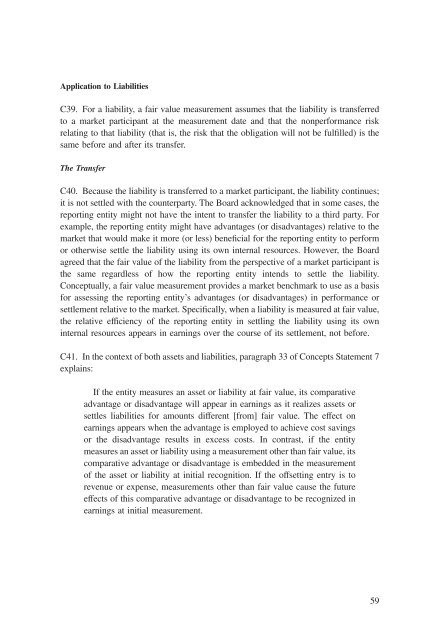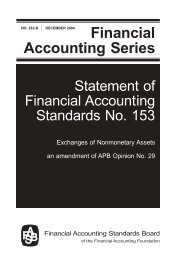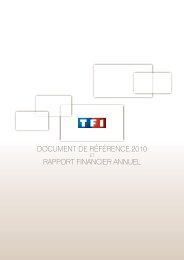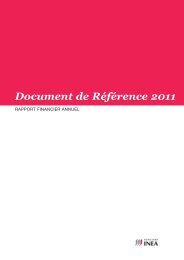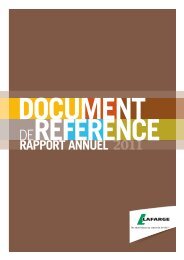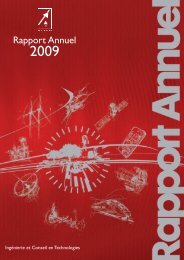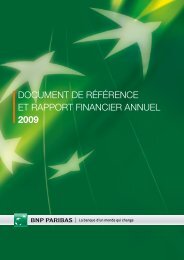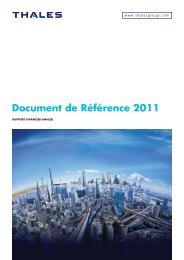Statement of Financial Accounting Standards No. 157 - Paper Audit ...
Statement of Financial Accounting Standards No. 157 - Paper Audit ...
Statement of Financial Accounting Standards No. 157 - Paper Audit ...
Create successful ePaper yourself
Turn your PDF publications into a flip-book with our unique Google optimized e-Paper software.
Application to Liabilities<br />
C39. For a liability, a fair value measurement assumes that the liability is transferred<br />
to a market participant at the measurement date and that the nonperformance risk<br />
relating to that liability (that is, the risk that the obligation will not be fulfilled) is the<br />
same before and after its transfer.<br />
The Transfer<br />
C40. Because the liability is transferred to a market participant, the liability continues;<br />
it is not settled with the counterparty. The Board acknowledged that in some cases, the<br />
reporting entity might not have the intent to transfer the liability to a third party. For<br />
example, the reporting entity might have advantages (or disadvantages) relative to the<br />
market that would make it more (or less) beneficial for the reporting entity to perform<br />
or otherwise settle the liability using its own internal resources. However, the Board<br />
agreed that the fair value <strong>of</strong> the liability from the perspective <strong>of</strong> a market participant is<br />
the same regardless <strong>of</strong> how the reporting entity intends to settle the liability.<br />
Conceptually, a fair value measurement provides a market benchmark to use as a basis<br />
for assessing the reporting entity’s advantages (or disadvantages) in performance or<br />
settlement relative to the market. Specifically, when a liability is measured at fair value,<br />
the relative efficiency <strong>of</strong> the reporting entity in settling the liability using its own<br />
internal resources appears in earnings over the course <strong>of</strong> its settlement, not before.<br />
C41. In the context <strong>of</strong> both assets and liabilities, paragraph 33 <strong>of</strong> Concepts <strong>Statement</strong> 7<br />
explains:<br />
If the entity measures an asset or liability at fair value, its comparative<br />
advantage or disadvantage will appear in earnings as it realizes assets or<br />
settles liabilities for amounts different [from] fair value. The effect on<br />
earnings appears when the advantage is employed to achieve cost savings<br />
or the disadvantage results in excess costs. In contrast, if the entity<br />
measures an asset or liability using a measurement other than fair value, its<br />
comparative advantage or disadvantage is embedded in the measurement<br />
<strong>of</strong> the asset or liability at initial recognition. If the <strong>of</strong>fsetting entry is to<br />
revenue or expense, measurements other than fair value cause the future<br />
effects <strong>of</strong> this comparative advantage or disadvantage to be recognized in<br />
earnings at initial measurement.<br />
59


